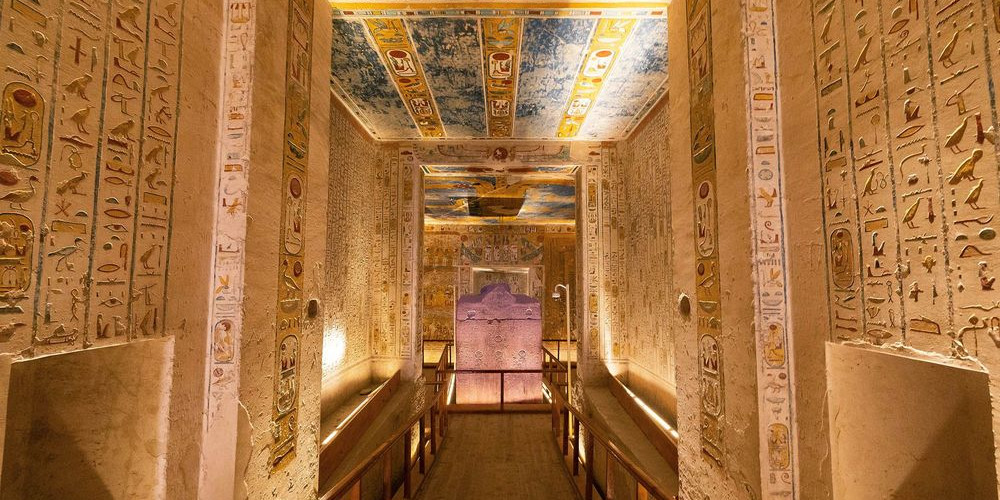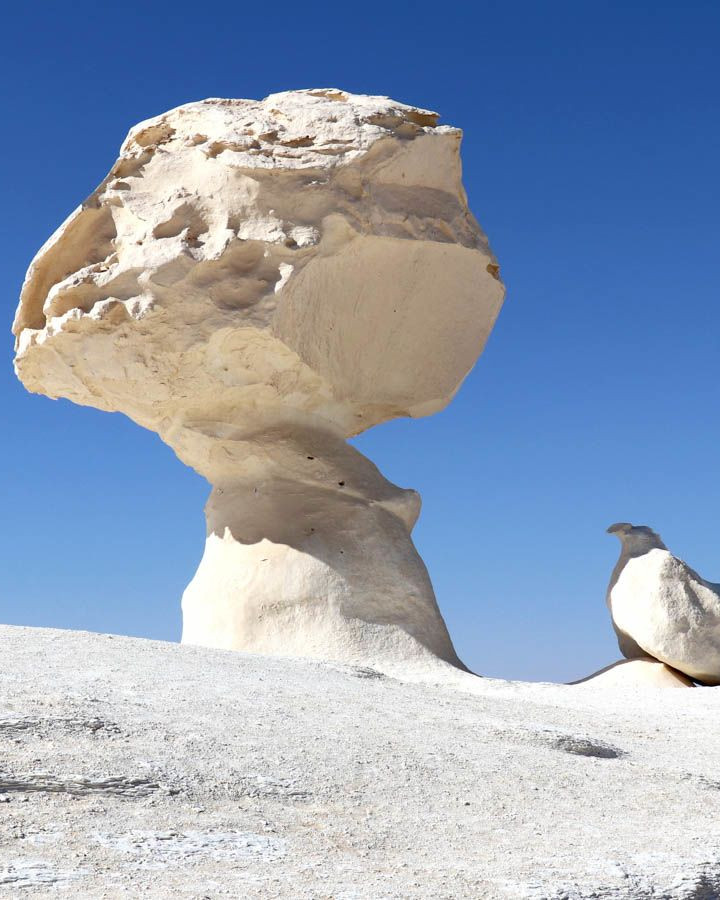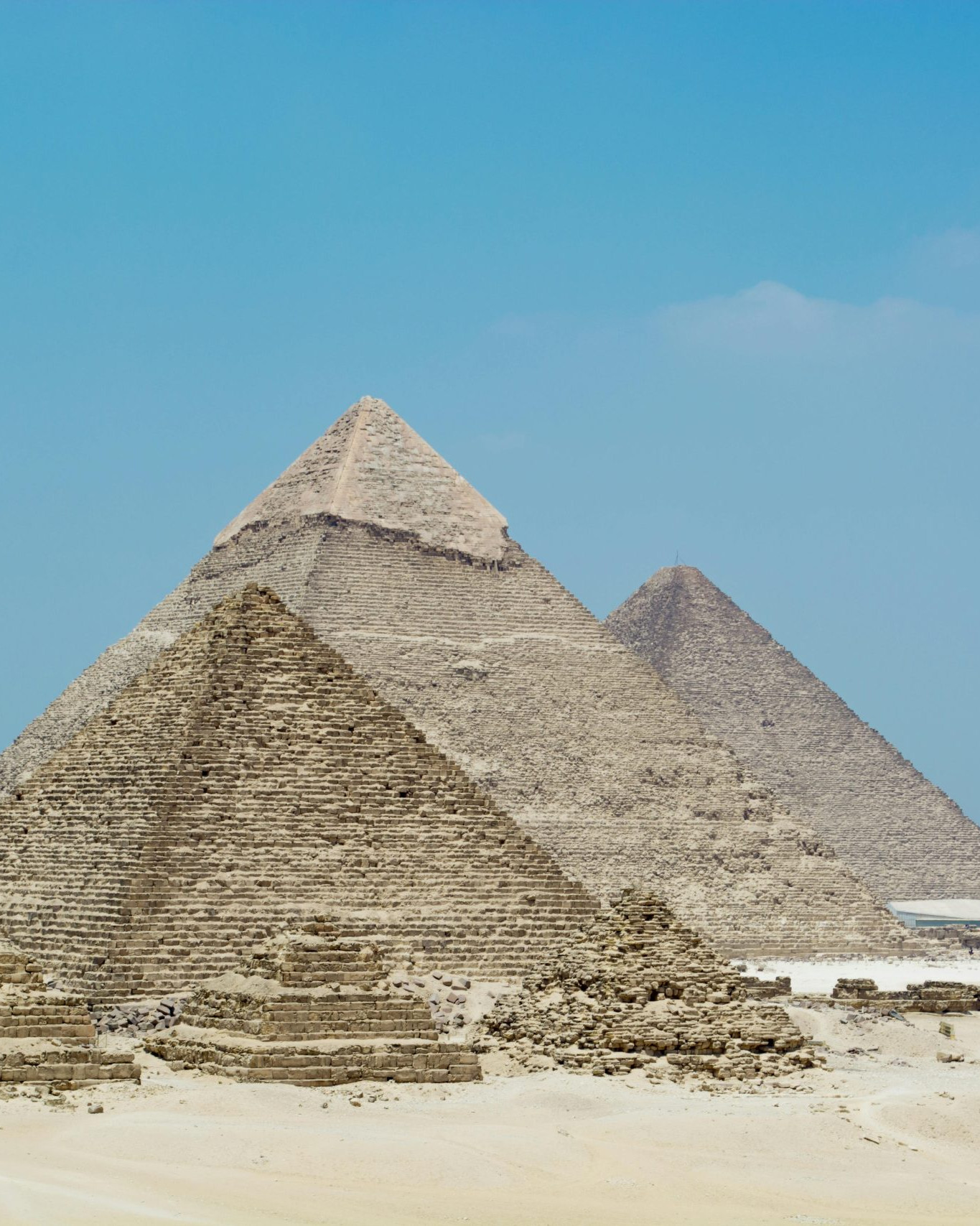Why did the ancient Egyptians choose a secluded desert valley to bury their most revered pharaohs? The Valley of the Kings, nestled on the western bank of the Nile near Luxor, serves as a fascinating window into Egypt’s New Kingdom period. From the intricate hieroglyphics that adorn its walls to the legendary tomb of Tutankhamun, this ancient burial ground offers unparalleled insights into the lives and deaths of Egypt’s elite rulers. Dive into the history and significance of this timeless necropolis and discover why it remains a cornerstone of ancient Egyptian archaeology.
Historical Significance of the Valley of the Kings
The Valley of the Kings, located on the western bank of the Nile River near Luxor, served as the primary burial ground for pharaohs and nobles during Egypt’s New Kingdom period, starting around 1550 BCE. This site was chosen due to its natural protective barriers and secluded location, which provided security against tomb robbers. The valley’s strategic position and challenging terrain made it an ideal resting place for the illustrious rulers of ancient Egypt.
The tombs in the Valley of the Kings are significant for their association with some of the most notable pharaohs in Egyptian history. Among those interred here are Tutankhamun, whose tomb (KV62) is famed for its wealth of artifacts; Seti I, known for the elaborate decorations in his tomb (KV17); and Ramesses II, one of Egypt’s most powerful pharaohs. These tombs not only serve as final resting places but also as monumental records of the pharaohs’ reigns, achievements, and religious beliefs.
The decorations and rituals associated with the tombs provide profound insights into ancient Egyptian culture. Intricate hieroglyphics and vibrant paintings adorn the walls, depicting scenes from the Book of the Dead and other religious texts. These artworks were believed to guide the deceased through the afterlife. The tombs also contained various artifacts, including statues, jewelry, and everyday items, intended to serve the pharaohs in the next world. This rich iconography and the accompanying burial goods offer a window into the spiritual and material aspects of ancient Egyptian civilization.
- Served as the burial ground for pharaohs and nobles during the New Kingdom period.
- Chosen for its natural protective barriers and seclusion.
- Notable pharaohs buried include Tutankhamun, Seti I, and Ramesses II.
- Tombs are decorated with intricate hieroglyphics and vibrant paintings.
- Provides insights into ancient Egyptian beliefs and rituals.
- Artifacts found in the tombs include statues, jewelry, and everyday items.
Location and Geology of the Valley of the Kings
The Valley of the Kings is situated on the western bank of the Nile River, near Luxor, Egypt. This location was strategically chosen for its natural protective barriers, including the pyramid-shaped mountain peak called al-Qurn. These geographical features provided a secluded and secure site for the burial of pharaohs and nobles during Egypt’s New Kingdom period. The valley’s remote position and natural fortifications helped deter tomb robbers, preserving the final resting place of many ancient Egyptian rulers.
The geological makeup of the Valley of the Kings includes limestone and sedimentary rock, which offered a stable environment for tomb construction. Limestone, in particular, was preferred for its ease of carving and durability, allowing artisans to create intricate tombs and detailed hieroglyphics. The region’s arid climate also played a crucial role in preserving the tombs and the artifacts within them. The dry conditions minimized the effects of weathering and decay, ensuring that these ancient structures and their contents remained intact for millennia.
| Feature | Description |
| Location | Western bank of the Nile River, near Luxor, Egypt |
| Natural Barriers | Pyramid-shaped mountain peak (al-Qurn) and surrounding terrain |
| Geology | Limestone and sedimentary rock providing a stable construction environment |
| Climate | Arid climate aiding in the preservation of tombs and artifacts |
Major Tombs in the Valley of the Kings
Tomb of Tutankhamun (KV62)
The Tomb of Tutankhamun, designated KV62, was discovered by Howard Carter in 1922. This discovery is one of the most significant archaeological finds of the 20th century, primarily due to the wealth of artifacts found within the tomb. The tomb contained over 5,000 items, including the famous gold mask of Tutankhamun, jewelry, chariots, and statues. The sheer volume and quality of these items provide invaluable insights into the opulence of the 18th Dynasty and the burial practices of ancient Egyptian royalty. Despite its relatively small size compared to other royal tombs, the treasure trove within KV62 has made it one of the most visited and studied tombs in the Valley of the Kings.
Tomb of Seti I (KV17)
The Tomb of Seti I, known as KV17, is renowned for its elaborate decorations and complexity. It is one of the longest and deepest tombs in the Valley, extending over 100 meters into the bedrock. The walls of KV17 are adorned with intricate carvings and vivid paintings that depict various scenes from ancient Egyptian religious texts, including the Book of the Dead and the Book of Gates. These decorations are not only artistically impressive but also provide a comprehensive guide to the religious beliefs and rituals of the time. Seti I’s tomb is considered one of the masterpieces of ancient Egyptian art and architecture, reflecting the grandeur and sophistication of his reign.
Tomb of Ramesses VI (KV9)
The Tomb of Ramesses VI, designated KV9, stands out for its unique features and well-preserved decorations. This tomb is particularly noted for its astronomical scenes, which are some of the most detailed and best-preserved in the Valley of the Kings. The ceilings of the burial chamber are covered with depictions of celestial bodies and constellations, reflecting the Egyptians’ advanced understanding of astronomy. Additionally, the walls are inscribed with texts from the Book of Caverns and the Book of the Earth, emphasizing the journey of the pharaoh through the underworld. The preservation and quality of the artwork in KV9 make it a key site for understanding the religious and astronomical knowledge of ancient Egypt.
Archaeological Discoveries in the Valley of the Kings
Archaeological interest in the Valley of the Kings has been fervent since its initial discovery in ancient times. The site gained renewed attention during the 19th and 20th centuries, particularly with the advent of systematic excavations. Early explorations were often driven by treasure hunters, but scholarly expeditions began to unravel the historical and cultural significance of the tombs. The most famous discovery was undoubtedly the intact tomb of Tutankhamun (KV62) by Howard Carter in 1922, which revealed a wealth of artifacts and provided unprecedented insights into the opulence of the 18th Dynasty. This discovery marked a turning point in Egyptology, shifting the focus from mere artifact collection to comprehensive archaeological research.
The major discoveries in the Valley have profoundly impacted our understanding of ancient Egyptian civilization. The tomb of Seti I (KV17), discovered by Giovanni Battista Belzoni in 1817, is noted for its elaborate decorations and extensive hieroglyphic texts that offer invaluable information on ancient Egyptian religious beliefs and practices. Similarly, the discovery of KV5, the tomb of the sons of Ramesses II, by Kent Weeks in 1995, revealed over 100 chambers, making it the largest tomb in the Valley. This find significantly expanded our knowledge of royal burials and the logistics involved in constructing such monumental structures.
Modern archaeological efforts continue to shed light on the secrets of the Valley of the Kings. The Theban Mapping Project, initiated in the late 1970s, has been instrumental in documenting and preserving the site. Recent findings include the discovery of KV63 in 2006, which, although not a tomb, contained a cache of mummification materials that provided insights into the embalming processes of the time. Additionally, radar scans have suggested the presence of potential deeper chambers in Tutankhamun’s tomb, hinting at further hidden treasures awaiting discovery. These ongoing projects underscore the Valley’s enduring relevance to archaeology and our understanding of ancient Egyptian history.
- Discovery of Tutankhamun’s intact tomb (KV62) in 1922.
- Seti I’s tomb (KV17) with its elaborate decorations.
- KV5, the largest tomb with over 100 chambers.
- Theban Mapping Project’s documentation and preservation efforts.
- Recent discovery of KV63, revealing mummification materials.
Visiting the Valley of the Kings: Tips and Tours
Reaching the Valley of the Kings is straightforward, with multiple modes of transportation available from Luxor. Visitors can fly into Luxor International Airport, which is well-connected with major cities. Alternatively, one can arrive by car, bus, train, or river cruise. The valley is situated on the western bank of the Nile River, and taxis or organized tours can easily take you there from Luxor. The journey is relatively short, making it convenient for day trips.
Upon arrival, your visit will begin at the Visitor Center. Here, you will purchase entrance tickets and optional tram tickets for transport within the site. The general entrance ticket grants access to three tombs of your choice from the list of open tombs. It’s essential to check which tombs are currently open, as this can vary. Additional tickets are required for special tombs, such as Tutankhamun’s. The Visitor Center provides maps, brochures, and information to help you plan your visit effectively.
Booking a guided tour in advance is highly recommended. Guided tours offer several advantages, including transportation, ticket arrangements, and the expertise of knowledgeable guides. These guides can provide in-depth historical context and answer any questions, enriching your experience. Additionally, tours often include visits to other nearby attractions, making the most of your time in the region.
- Arrive early to avoid the heat and crowds.
- Wear comfortable walking shoes as the terrain can be uneven.
- Bring water and sunscreen, as shade is limited.
- Check which tombs are open before purchasing tickets.
- Consider purchasing a photography pass if you wish to take photos inside the tombs.
- Respect the site by not touching the artifacts or walls.
Related Sites and Attractions Near the Valley of the Kings
The Valley of Queens is located adjacent to the Valley of the Kings and serves as the burial site for the queens of ancient Egypt, along with princes and princesses. With over 90 tombs, the most famous of which is the tomb of Nefertari, the favored queen of Ramesses II, the Valley of Queens offers a complementary exploration of royal burials. Nefertari’s tomb is renowned for its stunningly preserved wall paintings, showcasing vibrant colors and detailed religious scenes. These tombs provide insights into the lives and roles of royal women in ancient Egyptian society, enriching the overall understanding of Egypt’s royal history.
Other notable attractions near the Valley of the Kings include the Temple of Hatshepsut, located at Deir el-Bahari. This mortuary temple is famed for its unique architectural design, consisting of terraces that ascend from the desert floor into the cliffs. The temple honors Hatshepsut, one of Egypt’s few female pharaohs, and features detailed reliefs that depict her reign and divine birth. Additionally, Luxor Temple, situated on the east bank of the Nile River, is another must-visit site. Known for its grandiose columns, massive statues, and avenue of sphinxes, Luxor Temple was a significant religious center dedicated to the Theban Triad of Amun, Mut, and Khonsu.
- Valley of Queens: Burial site for queens, including Nefertari.
- Temple of Hatshepsut: Known for its unique terraced architecture.
- Luxor Temple: Famous for its grand columns and statues.
- Karnak Temple Complex: A vast complex of temples and chapels.
Final Words
Exploring the Valley of the Kings unveils a wealth of historical insights and stunning archaeological wonders. Each tomb’s decorations and rituals offer a glimpse into ancient Egyptian beliefs.
Geological features of the Valley, like limestone and natural barriers, contributed to its suitability for tomb construction. Discoveries such as Tutankhamun’s tomb exemplify the site’s archaeological significance.
Planning a visit to the Valley of the Kings ensures an enriching experience, with nearby attractions like the Temple of Hatshepsut adding to its allure. Embrace the timeless legacy the Valley of the Kings has to offer.
Top Attractions
Imagine a place where the landscape is otherworldly, with…
Are the Great Pyramids of Giza merely monumental tombs, or…




